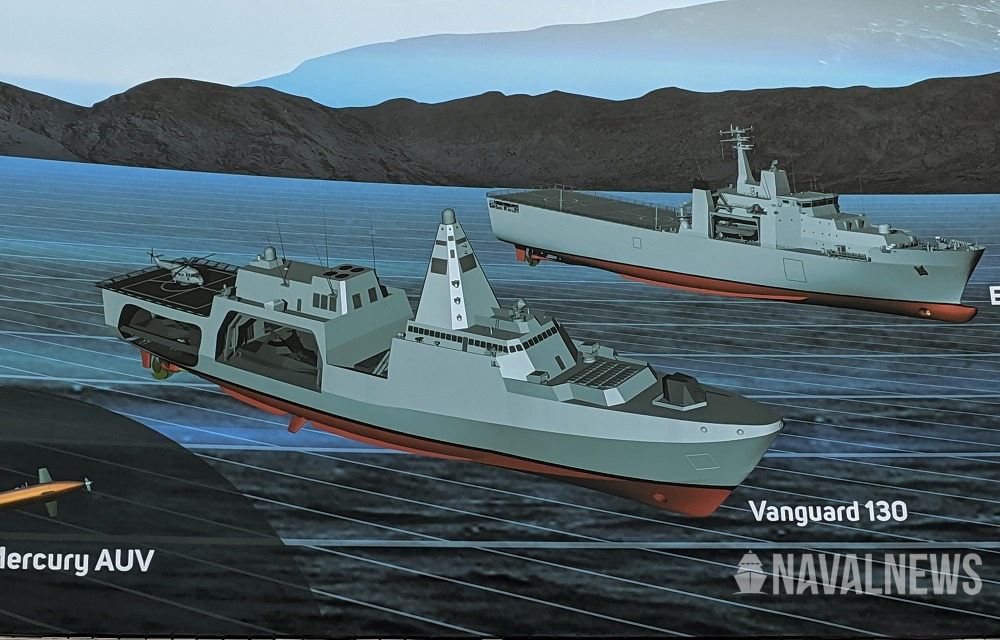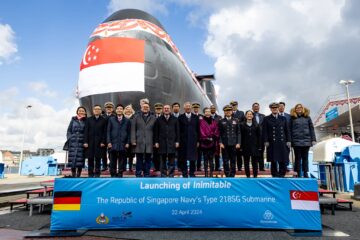IMDEX Asia 2019 is the international maritime defense exhibition currently held in Singapore.
The Vanguard 130 design combines a full fledged surface combatant with a mother-ship: A platform able to deploy and recover a wide array of unmanned systems such as UAV, USV and UUV.
According to local company ST Engineering, the Vanguard 130 Multi-Role Combatant is a good fit for ship operators looking for enhanced cost efficiencies and flexible ship deployment. It is part of a series of five classes that delivers multi-modal capabilities with one design. This enables enhanced cost efficiencies across the platforms as all five classes share common hull forms that reduce acquisition costs. Because of its highly scalable and modular design, the Vanguard allows operators to exercise more flexibility in the ship’s deployment, including space for carrying of unmanned vehicles for warfare or other operations. The in-house developed and patented Q-LARS 2.0 for handling a wide range of small crafts and unmanned surface vehicles can be easily adapted for use in every Vanguard series vessel.

The vessel is a full fledged surface combatant because it is fitted with VLS for surface to air missile, anti-ship missile launchers, torpedo launchers, decoy launchers as well as 76mm, 30mm and 12.7mm gun mounts. The ship has a length of 130 meters, a speed of 28 knots and a displacement of 5,000 tons.
ST Engineering would not confirm or even comment about it, however it is Naval News’ own impression that this design would be a good fit for the future “MRCV” requirement of the Republic of Singapore Navy (RSN).

The future MRCV or Multi-Role Combat Vessels will replace the ageing Victory-class Missile Corvettes, which have served with distinction since 1989. Delivery is expected to begin from 2025, with full delivery expected around 2030. The RSN has yet to issue its requirements for this future program however some information about it appeared recently when Singapore MINDEF outlined its future procurement plans
Besides improving capabilities, the new MRCVs will be custom-built for lean manning and incorporate technologies to automate certain functions. This results in the MRCV using less manpower – about half the size found in modern frigates. In addition, this will result in operational cost savings of up to 10 per cent, compared to similar-sized frigates.
The MRCVs will also have unmanned air and surface vehicles to extend their reach and flexibility against threats.






